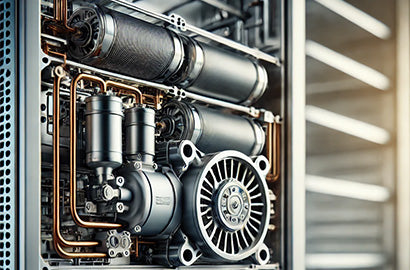In the vast landscape of homeownership, the need for replacement parts is an inevitable reality. Whether it's a malfunctioning appliance, a leaky faucet, or a worn-out component, the demand for durable, efficient, and eco-friendly replacement parts continues to grow. Fortunately, the home replacement parts industry is experiencing a wave of innovations and trends that promise to revolutionize the way we approach maintenance and repair tasks within our homes.
One of the most significant trends in the realm of home replacement parts is the advancement of materials science. Manufacturers are increasingly turning to high-performance materials such as carbon fiber composites, advanced polymers, and ceramic-metal hybrids to create replacement parts that offer unparalleled durability and longevity. These materials not only withstand the rigors of daily use but also resist corrosion and degradation, extending the lifespan of home appliances and fixtures.
Moreover, the adoption of innovative manufacturing techniques is driving further improvements in replacement parts. Additive manufacturing, commonly known as 3D printing, allows for the rapid prototyping and production of custom-designed parts with intricate geometries. This technology enables manufacturers to produce on-demand replacement parts quickly and cost-effectively, reducing lead times and minimizing waste.
In tandem with advancements in materials and manufacturing, design innovation plays a crucial role in enhancing the performance and functionality of replacement parts. Engineers and designers are leveraging computational modeling and simulation tools to optimize the design of components for improved efficiency and reliability. Additionally, the integration of smart technology into replacement parts is opening up new possibilities for home maintenance and repair.
Imagine a thermostat that learns your heating and cooling preferences and adjusts itself accordingly, or a water sensor that detects leaks and alerts you via a smartphone app. These are just a few examples of how smart technology is revolutionizing the way we interact with replacement parts in our homes. Wi-Fi-enabled thermostats, leak detection sensors, and smart appliances are empowering homeowners to monitor and control their home systems remotely, leading to greater convenience, energy savings, and peace of mind.
Furthermore, the integration of smart technology into replacement parts is paving the way for predictive maintenance solutions. By collecting and analyzing data on the performance and condition of various home systems, predictive maintenance algorithms can identify potential issues before they escalate into costly repairs. This proactive approach not only extends the lifespan of appliances and fixtures but also helps homeowners avoid unexpected downtime and inconvenience.
In addition to durability, efficiency, and smart functionality, environmental sustainability is becoming an increasingly important consideration in the development of home replacement parts. Manufacturers are exploring eco-friendly materials and manufacturing processes that minimize resource consumption and reduce carbon emissions. From biodegradable plastics to recycled metals, sustainable alternatives are gaining traction in the replacement parts market, aligning with consumers' growing concerns about environmental conservation.
In conclusion, the future of home replacement parts is defined by a convergence of trends and innovations that promise to transform the way we maintain and repair our homes. From advancements in materials and manufacturing techniques to the integration of smart technology and a focus on environmental sustainability, these developments are reshaping the home maintenance landscape. As homeowners continue to seek durable, efficient, and eco-friendly solutions, the home replacement parts industry is poised to meet and exceed their evolving needs.
Innovations Shaping the Future of Home Replacement Parts

Discover the future of home replacement parts with our insightful blog on the latest innovations and trends. From advanced materials like carbon fiber composites to smart technology integration, explore how these developments are reshaping maintenance and repair practices. Learn about 3D printing for custom parts, predictive maintenance solutions, and eco-friendly alternatives. Find out how these advancements offer unparalleled durability, efficiency, and environmental sustainability, meeting the evolving needs of homeowners. Stay ahead of the curve and revolutionize your home maintenance with our comprehensive guide to the innovations shaping the future of home replacement parts.


